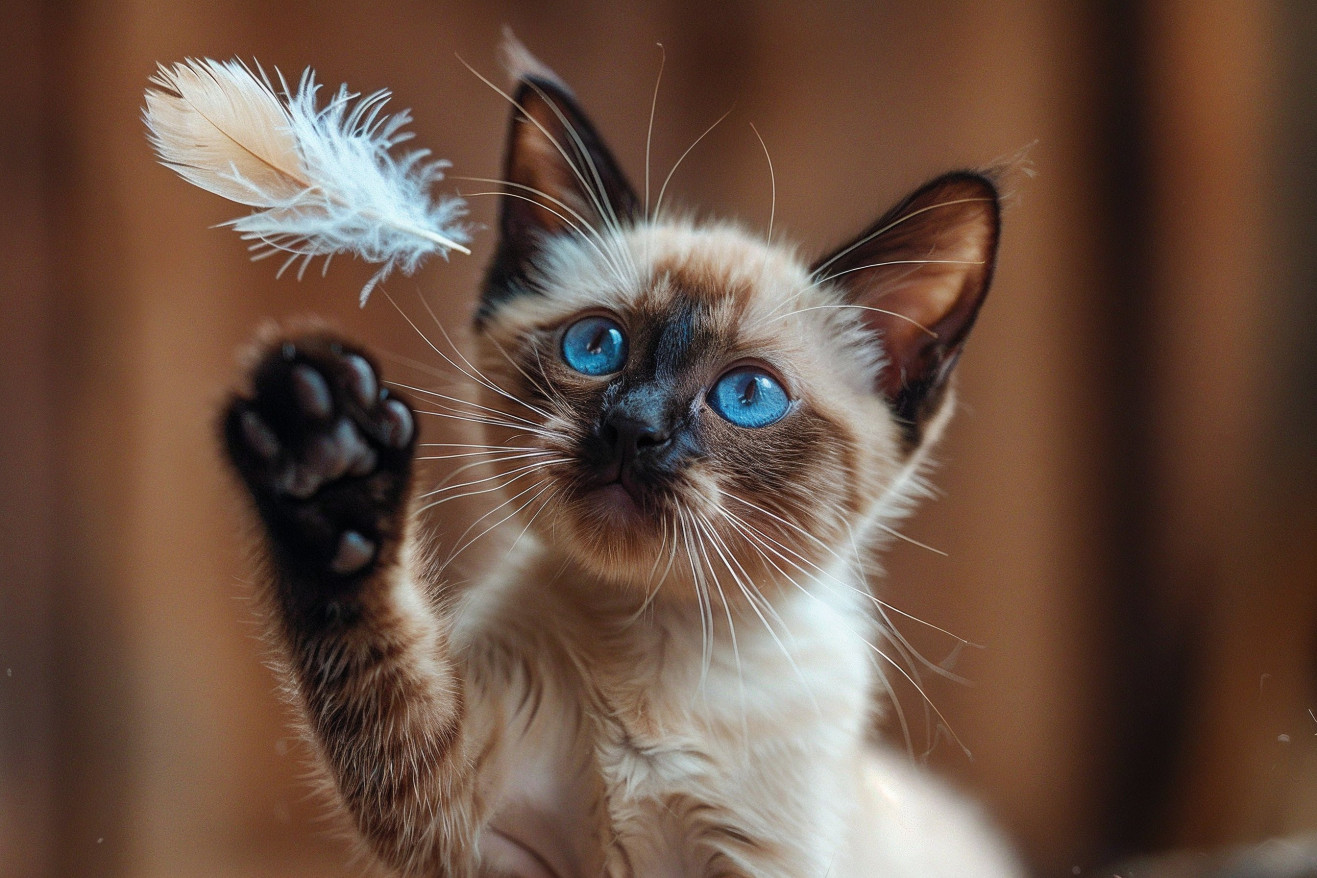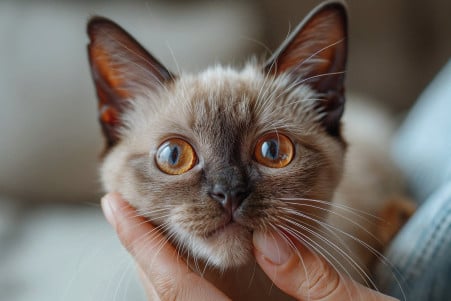Why Do Cats Slap? Reasons Behind This Quirky Feline Behavior
31 May 2024 • Updated 29 May 2024

While the reasons cats may swat or "slap" can range from trying to get your attention to practicing hunting skills, the question remains: Why do cats slap? Cats slap to get attention, to play, to practice hunting skills, and to establish boundaries or dominance. Play fighting with littermates helps kittens learn how to hunt. Meanwhile, adult cats may slap to get you to interact or invite a game, and swatting at prey-like toys can help them refine their hunting skills.
This article will explore the work of animal behaviorists and cat researchers, who have identified four main reasons cats slap: play, hunting practice, communication, and establishing territory or dominance within their social hierarchy. This work has helped to uncover the biological drives behind different types of cat "slapping," leading to a better understanding of this funny yet sometimes annoying behavior. Armed with this knowledge, you can better recognize your cat's signals and even work to retrain any negative slapping tendencies.
Why do cats slap?
The Playful Swat: Cats' Invitation to Interact
The playful slap is one of the most common reasons cats swat at objects, toys, or even their owners. As Mental Floss points out, kittens learn this behavior from their natural play fighting with their littermates, which is important for honing their hunting skills. Adult cats often slap at toys, hands, or feet to invite their human to engage in interactive play.
The Spruce Pets explains that when a cat's body language is loose and relaxed, with ears forward, whiskers out, claws retracted, and no vocalizations such as hissing or growling, the swatting is playful. Regular play with appropriate toys and enrichment activities can help meet cats' natural need for physical play and stalking practice.
Cats' paws are full of nerve endings, and they use them to explore objects and cautiously swat at potential "prey" to see if it's alive. Their playful swatting is an instinctive behavior that comes from their predatory nature. Knowing this, pet parents can help redirect their cats' excessive swatting in a positive way by using interactive wand toys or puzzle feeders that simulate the hunt.
The Predatory Paw: Slapping as a Hunting Technique
In many cases, cats slap things as a way to express their natural predatory instincts. As AnimalPath.org notes, cats' paws are full of nerve receptors that help them process sensory information. So when they slap at something, they're essentially trying to figure out what it is by using these receptors.
As veterinarian Dr. H. Ellen Whiteley, as cited by HowStuffWorks, explains, "Your cat's instincts tell her that paperweight or knickknack could turn out to be a mouse. Her poking paw would send it scurrying, giving her a good game (and possibly a good lunch)." Slapping at toys or other moving objects also allows cats to practice their hunting techniques and reflexes.
The Petsmont notes that cats' paws are highly sensitive and have retractable claws that cats use for hunting, climbing, and gaining traction. This behavior may be a cat's way of investigating potential prey and determining if it's alive. Providing toys that mimic prey can help cats get the stimulation they need from this kind of play.
Paws as Communication: Slapping to Get Attention or Establish Boundaries
Cats communicate with their paws, and slapping or swatting is one way they can use them to send a message. Milwaukee Paws Pet Care notes that slapping or pawing at an owner can be a cat's way of asking for attention, love, play, or food.
PetMD says that kneading with paws is a sign of affection and happiness and comes from kittenhood when kittens kneaded their mother's mammary glands to stimulate milk flow. Meanwhile, SHEBA® UK says that cats can use their paws to show love and affection to their owners.
On the other hand, slapping can also be a way for cats to protect their personal space or assert their place in the social hierarchy, as Cat in the Box LLC points out. The context and the cat's other body language can help you determine what the cat is trying to communicate with their slapping behavior.
How to Deal With Slapping in Multi-Cat Households
In multi-cat households, slapping can be a sign of territorial aggression or resource guarding. Feline Purr Perspective explains that making sure each cat has access to resources like litter boxes, food/water stations, and scratching posts can help reduce competition and aggression between cats.
When bringing a new cat into a multi-cat home, PAWS recommends a slow desensitization process to help the other cats in the home get used to the new addition. In addition, separating the cats and giving them their own spaces can help reduce tensions and the resulting aggressive slapping.
Feline Purr Perspective also notes that enrichment and play can be used to help prevent and manage aggressive play and redirected aggression. In particular, interactive toys and one-on-one play can be used to help deal with slapping in a multi-cat household.
Slapping and Medical Conditions: When to Seek Veterinary Advice
While slapping is often a normal behavior in cats, there are some cases where excessive or sudden slapping could be a sign of an underlying medical condition. Catster lists feline hyperesthesia syndrome (FHS) as a condition that can cause increased skin sensitivity and result in agitation, aggression, and slapping. The HSHV also lists petting-induced or overstimulation aggression as a condition that can result in slapping when a cat is touched in certain areas.
According to VCA Animal Hospitals, compulsive disorders, as well as oral diseases or neurological issues, can sometimes lead to slapping or self-directed aggression. WebMD and Good Pet Parent provide more details on the signs of FHS, which can also include sudden changes in mood, tail chasing, and extreme sensitivity to touch.
If slapping is happening in conjunction with other symptoms, it's important to talk to a vet to make sure there aren't any medical conditions at play. Knowing the potential medical reasons for excessive slapping can help ensure that the cat gets the help and care it needs.
Conclusion: What Does Slapping Mean and How Can You Help?
The four primary reasons for cat slapping behavior are play, hunting practice, communication, and establishing boundaries or dominance. It's important to observe a cat's body language and context to decipher the intended message behind the slapping.
By ensuring that cats have enough playtime, enrichment, and toys, you can help make sure that their natural instincts are being met and that they aren't using slapping to communicate. If you notice that your cat is slapping more than usual or that other symptoms are present, it's important to talk to a vet to rule out any medical issues.


